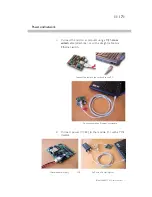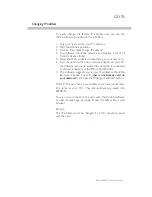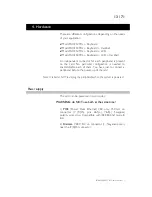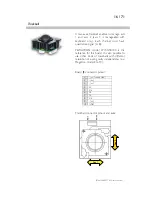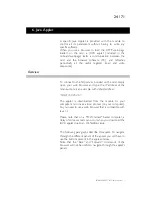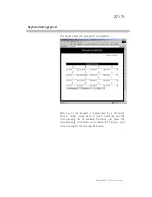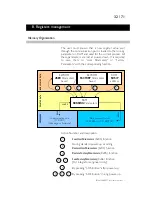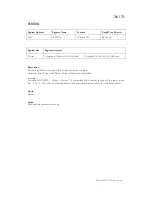
21 / 71
TCP & UDP Control port (# 8010)
This port is used to access the registers described in the
chapter “Registers management” of this manual.
Note:
If you plan to configure all registers only using the onboard
Webpage, you can skip this section and go to Java-Applet section.
(The Java-Applet also uses this port to read and write the different
settings!)
TCP/IP works in big endian: most significant byte first,
followed by least significant byte(s). The access is done by
sending a packet, that follows a simple (6 byte header)
protocol.
Structure of each packet:
1) Function ID (2 bytes) ……………………………………
Code of the function that has to be executed.
2) Transaction ID (2 bytes)…………………………………
Number that defines this packet
3) Length of the parameters (2 bytes)…………………
Number of the pardata bytes
4) Parameters (X Byte) ………………………………….…
Para Data
5) Checksum (2 bytes) ……………………………………...
Control Sum of packet’s bytes
Function ID
The specific code for each function can be found on the
next page of this manual.
Transaction ID
The user defines himself the values of the
Transaction ID
.
Normally each packet/transaction (communication
request) should have a different ID (even if this is not
mandatory). When the FMod-IPAXESCTRL receives a
command/packet, it sends back an answer (at each
request). This answer contains the same
Transaction ID
than the corresponding command previously sent. In that
way the user is able to check the execution of each
command.
Length of the parameters
This 2byte value corresponds to the length (in bytes) of
the next section of the packet (parameters only).
Parameters
This part of the packet contains all the parameters (mainly
the data that are sent).
Checksum
This 2 bytes value is the Check Sum of all the bytes of the
packet. (more information on next pages).
FMod-IPAXESCTRL User Manual v.1.1





